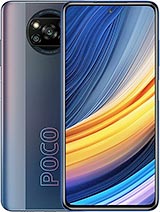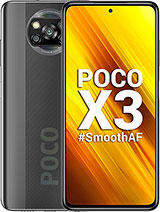POCO X3 Pro vs X3 NFC Camera Comparison: No Contest? By Renzo Claros - Tech & Cameras
What's it like to compare better camera hardware in polo, x3 NFC against aging, but with better software processing in Poco x3 pro, let's find out in this camera comparison and make sure to subscribe. To see more of my Poco x3 pro coverage. I do have a review coming very soon, so, as I refresh it, the x3 comes equipped with a 64 megapixel Sony main camera, a 13 megapixel ultra-wide and a pair of 2 megapixel sensors for macro in depth. On the other hand, the x3 pro comes with a 48 megapixel Sony sensor, an 8 megapixel ultra-wide and also a pair of 2 megapixel sensors for macro in-depth, but with the front cameras both are packing: 20 megapixel apiece, although the x3 has the better camera hardware, at least on paper, the BC pro tries to compensate with better post-processing or software enhancements from the snapdragon 860, which is essentially a rehashed version of the snapdragon 855 from 2 years ago. Now the chipset plays a vital role in this comparison, since most flagship devices not only rely on good sensors to produce top-notch photos and videos, but also on image enhancement that the chipset brings to the table throughout the video there will be watermarks indicating which device was used to capture the images. But since I messed up a few of them, those that will appear on the left portion of your screen comes from the BC pro and the ones on the right are from the x3.
That said, let's start with a standard outdoor shot at a glance. Both photos look sharp and with identical white balance exposure, but to subject the foliage, the x3 has a sharper look despite having the same sharpness as the BC pro when zoomed in as a result of the added sharpness, the x3 comes away with noisier details in the shadows. The kg also appears with a more contrast look as seen from the bluer clouds and greener footage. Switching our focal length to ultra-wide the x3 maintained its contrast look a bit with less saturation than its wide angle. Although color fringing on the edges of the photo is present, the overall image is sharper and better looking than the x3 pro.
Perhaps the software was unable to compensate 48, megapixel ultrawide sensor moving indoors. We can see the benefits of the larger sensors since the x3 has the sharper look. Despite the noisier output, you can also tell that they have different white balances in the shot with x3 pro going for warm tones and the x3 for cool zones taking another indoor shot, but with window lighting and colorful subject, the white balance has been switched with x3 having a warm tone and the kg pro going for a cool tone. However, the kg pro exposed the pink- u better than the x3, since it didn't blow away the detail that much switching to night mode where software enhancement is used more so than the hardware. The oz pro came away with a sharper and better preserved detail, though the x3 looks sharp at a glance its noisy output washed away.
Some details. However, the x3 didn't have any problem with the white balance, whereas the x2 pro heavily leaned towards the cool and purple tones in another photo, the x3 came away with a better and brighter shot, but in another the XD pro handled the highlights and shadows better than the x3, even with a heavy purple scent. I guess at this point. Consistency remains a toss-up between the two switching to the selfie camera. The background appears to be similar, if not identical, but the x2 pro smoothed out my skin, thus making my face a bit bearable as opposed to the sharper and more natural look of the x3 or thread mode seems to share the same story, but the x3 finally smoothed out my skin just quite a bit.
Now that we're done with photos, let's go to videos once again using the main sensor and recording at 4k at 30fps. It's basically like comparing the first set of photos. The x3 again looks sharper and more contrast than the kg pro for stability, it's hard to discern which has the better electronic image stabilization, but you just have to appreciate the lack of jitters when panning and moving both ultra-wide sensors, however, are capped at 1080p at 30 frames per second other than the brighter highlights of the x3. The rest of the video quality is pretty much identical. This is despite the smaller ultrawide sensor on the x3 pro.
When you switch to slow mode, the x3 can go up to 1080p at 120 frames, which is the standard in affordable phones like this, but thanks to the better processing chip on the BC pro, it can push its 1080p slo-mo video up to 960 frames. Though the option is available on the x3, you do have the saddle for 720p, which is blurry in comparison. Selfie videos are also capped at 1080p at 30 frames. However, the x3 pro punches in a little, hence further exposing my face and showing somewhat better stability when walking on the axis end. It makes it easier to take group shots due to the wider field of view, but at the expense of shakiness.
Although you get slightly smoother footage and x3 pro, it does keep frames at times. At the end of the day, the two devices prove that, whether you go for hardware software you're going to get a compatible camera package, though the x3 beats the Xe pro in most cases, especially in detail, quality and ultrawide. The benefit of having a faster computing experience from the snapdragon 860 outweighs the benefit of having sharper picture quality. Additionally, there's more room for software improvements on the x3 pro, given that it's the newer phone in this comparison, so that's been, it drops a sub or a like if you feel supporting channel and as always until the next one stay safe. You.
Source : Renzo Claros - Tech & Cameras


























